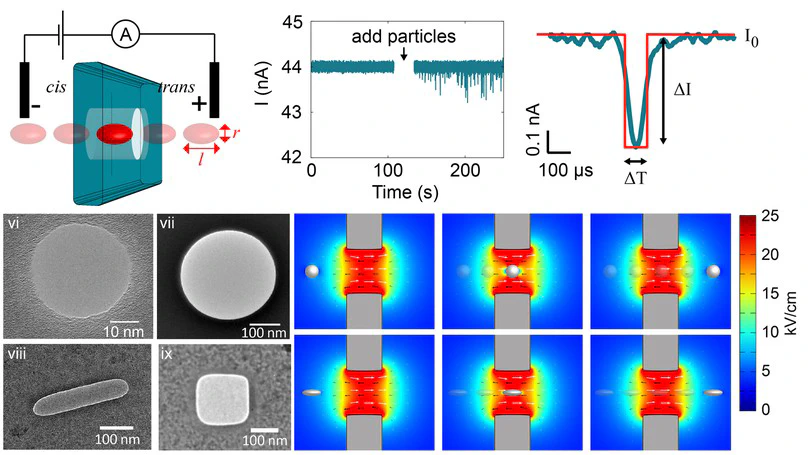آرمین درویش
علم و تکنولوژی | برنامه نویسی | تکنولوژی پزشکی | علم داده
حسگرهای ملکولی | نانو حفره ها | نانو افزارها
«درخت تو گر بار دانش بگیرد، به زیر آوری چرخ نیلوفری را»
ناصر خسرو قبادیانی ~
درباره
من مدرک دکتری خود را در رشته مهندسی پزشکی از دانشگاه درکسل آمریکا در سال ۱۳۹۵ دریافت کردم. موضوع پژوهش من در این دوره، طراحی و ساخت نانوحفره های مصنوعی و استفاده از آنها در کاربردهای نوینی همچون تشخیص ملکولهای نوکلئیک اسید، مشخصه یابی پروتئین ها، و تشخیص و مشخصه یابی ویروسها بود. پس از آن، من در چند شرکت در همین حوزه به خصوص در زمینه طراحی و ساخت سیستمهای تشخیص ملکولی و ردیف یابی دی ان ای فعالیت کرده ام.
به لحاظ تخصصی من در شاخه های مختلفی از علم و تکنولوژی دارای تجربه کاری هستم و به خصوص در حوزه حسگری تک ملکولی سالها فعالیت کرده ام. در پروژه های مختلفی که تا امروز در آن نقش داشته ام، در حوزه هایی چون علم مواد، مهندسی فرایند، ساخت میکرو و نانو افزارها، پردازش سیگنال یا تصویر، مدلسازی مختلط فیزیک، طراحی آزمایش، تحلیل آماری داده ها، فراگیری ماشینی، داده شناسی، داده شناسی زیستی و همچنین زیست شیمی ملکولی تجربه کسب کرده ام. همچنین من این فرصت را داشته ام که به واسطه کار در گروه های مختلف در دانشگاه و صنعت با روشهای نوین مدیریت پروژه آشنا بشوم.
دانلود رزومه .
- نانو سنسورها
- بیوالکترونیک
- بیوفیزیک تک ملکولها
- توالی یابی و نقشه برداری از دی ان ای
- پردازش سیگنال | تصویر
- ژنتیک و ژنومیک
- پروتئومیک
- داده شناسی
- داده شناسی زیستی
- علم کامپیوتر
دکتری مهندسی پزشکی، ۱۳۹۵
دانشگاه درکسل، فیلادلفیا، آمریکا
کارشناسی ارشد مهندسی پزشکی، ۱۳۹۱
دانشگاه درکسل، فیلادلفیا، آمریکا
کارشناسی مهندسی پزشکی، ۱۳۸۹
دانشگاه صنعتی امیرکبیر (پلی تکنیک)، تهران، ایران
تجربیات
دوره ها و گواهی نامه ها
مهارتها و تواناییها
پروژه ها
نمونه مقالات علمی

Enveloped viruses fuse with cells to transfer their genetic materials and infect the host cell. Fusion requires deformation of both viral and cellular membranes. Since the rigidity of viral membrane is a key factor in their infectivity, studying the rigidity of viral particles is of great significance in understating viral infection. In this paper, a nanopore is used as a single molecule sensor to characterize the deformation of pseudo-type human immunodeficiency virus type 1 at sub-micron scale. Non-infective immature viruses were found to be more rigid than infective mature viruses. In addition, the effects of cholesterol and membrane proteins on the mechanical properties of mature viruses were investigated by chemically modifying the membranes. Furthermore, the deformability of single virus particles was analyzed through a recapturing technique, where the same virus was analyzed twice. The findings demonstrate the ability of nanopore resistive pulse sensing to characterize the deformation of a single virus as opposed to average ensemble measurements.

This thesis lays the groundwork to develop novel enabling technologies based on nanopore resistive pulse sensing for characterization of vesicles’ elastic properties at nanoscale. Our data suggests that such platform can offer significant advantages over current state-of-the-art systems particularly in terms of throughput, costs and operability.





















































